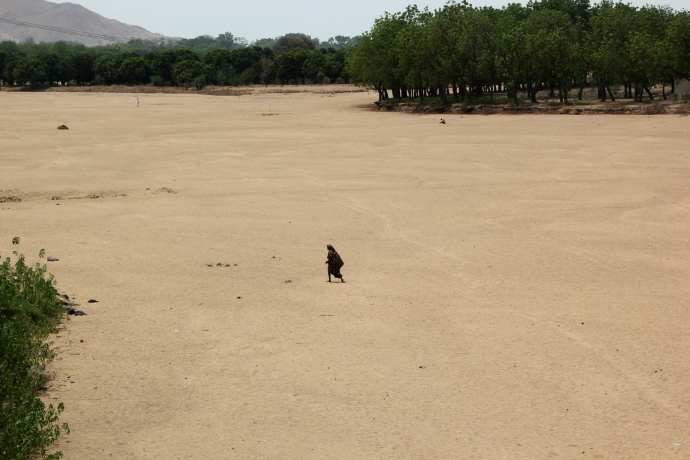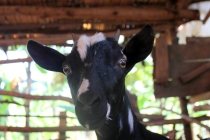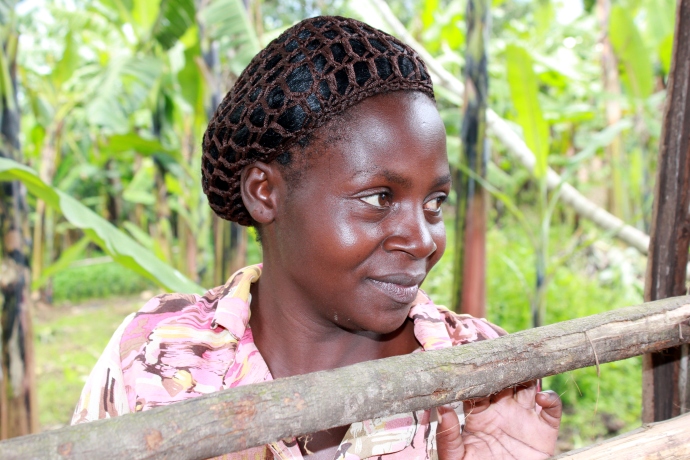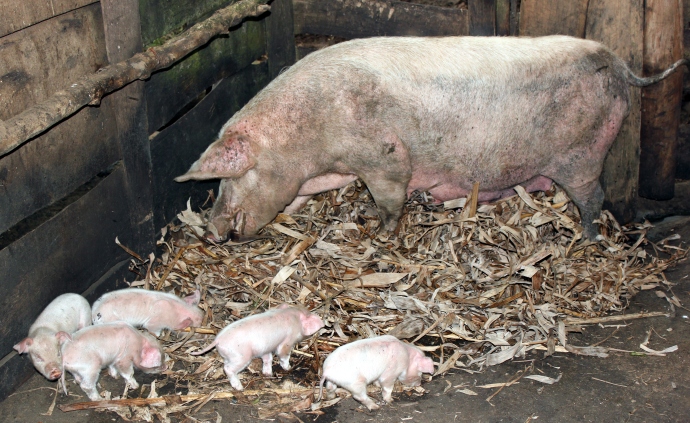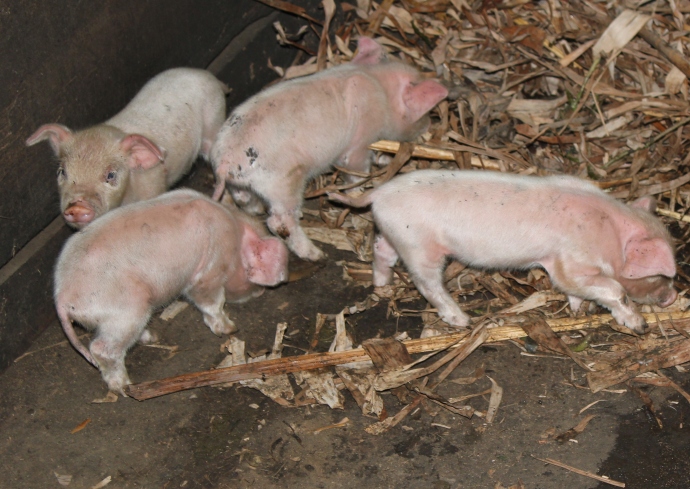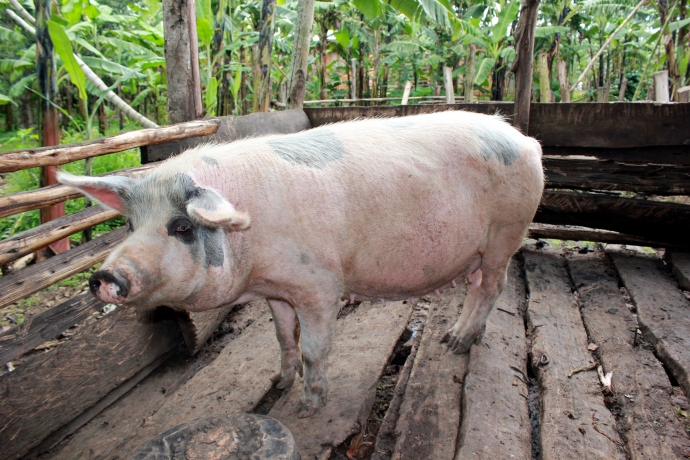 The first thing you notice when you travel from southern Cameroon to the Far North is that suddenly, everyone seems a little bit taller and a whole lot thinner. The people of the Far North remind me of the Masai – long, impossibly lean, and elegant beyond description, with cheekbones that could cut glass.
The first thing you notice when you travel from southern Cameroon to the Far North is that suddenly, everyone seems a little bit taller and a whole lot thinner. The people of the Far North remind me of the Masai – long, impossibly lean, and elegant beyond description, with cheekbones that could cut glass.
The second thing you notice is color – the total lack of it in this parched dun landscape aching for water at the end of the dry season, and the raucous surfeit of it in the robes, scarves and head coverings of the women. Even in the withering heat, they look amazing.
But the day I visited Mordok village outside Maroua, instead of blazing sun, we had cool, rainy weather. We were traveling with Heifer‘s aptly titled Animator, Robert Ndouwountang, a local organizer who speaks both French and the tribal language of Guiziga, and he is a force of nature all by himself. Robert has been responsible for training, implementing, overseeing and motivating Heifer’s project in Mordok since 2007, as part of Heifer‘s large umbrella project that will benefit 1,270 farm families of 10,160 people here in Cameroon’s Far North.
The Mordok group -actually 2 groups – is 100% women and the project’s goal is food security for the village. In this region with 38% malnutrition in children, and about 9 children per household (2-3 of them usually adopted from other families or relatives), that’s no small undertaking.
Yet with the gift of sheep and a few simple tools & trainings, life here has become markedly better.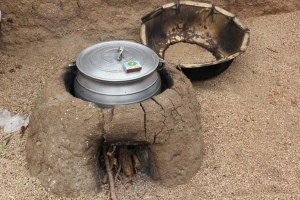
Take the energy stove. Each woman built one using local clay in about 30 minutes (with the animator’s guidance), and now the firewood laboriously collected in the bush & hauled home lasts five days, instead of 1 ½. To prove that to her daughter, one woman did a side-by-side test and found the energy stove used 70% less firewood and cooks faster. (Plus, the women can cook outside during the 9-month dry season, shielding the whole family from dangerous indoor smoke.)
In the project, Mordok women were also given 18 handcarts, which makes carrying 20 liter bottles of water from the borehole a lot faster and easier (and gives girls time to go to school).
 The sheep the women received from Heifer have not just added protein and income to families’ lives, their manure is collected to produce compost that has doubled the production of their fields. And by using retaining walls and terracing, as Robert has encouraged them to do, farmers are protecting the region’s soil from erosion and degradation and conserving precious water.
The sheep the women received from Heifer have not just added protein and income to families’ lives, their manure is collected to produce compost that has doubled the production of their fields. And by using retaining walls and terracing, as Robert has encouraged them to do, farmers are protecting the region’s soil from erosion and degradation and conserving precious water.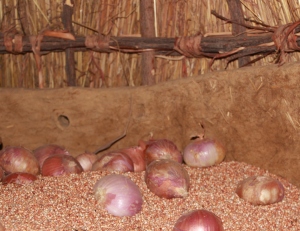
Women’s groups in several villages have even banded together to build water-tight storage facilities for their grains and onions, so they will last through the wet season, instead of counting on traditional handmade straw structures to keep out the rain and moisture. The impact of that improvement? An 80 kilo bag of onions that sells for 5000 francs ($10) at harvest time will bring in 120,000 ($240) at the end of the wet season. And these joint efforts are a direct result of the leadership and organizational trainings the women are putting into action.
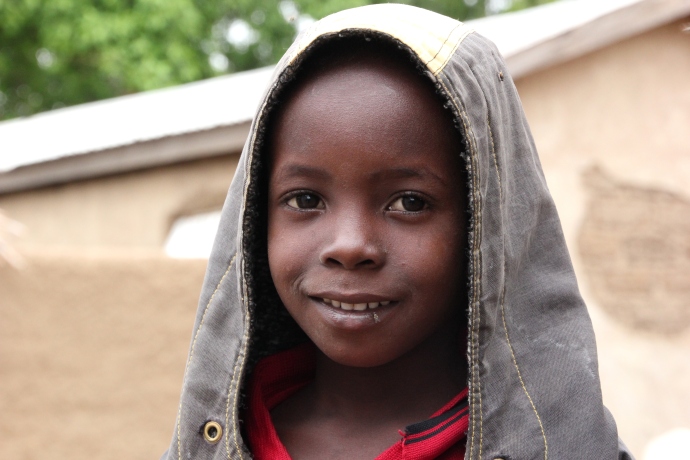 And yet, life is still very difficult here. The children are too skinny, and some of the women looked so fragile. When I asked what the family eats in a typical day, the women say they have pap, or bui, (cooked grains) for breakfast. For lunch, it’s sauce and cous-cous, the ubiquitous fu-fu of cassava, yams or plantains, boiled and pounded into dough. And more cous-cous and sauce for dinner. Once a month, the family will have meat. And once a week, fruit.
And yet, life is still very difficult here. The children are too skinny, and some of the women looked so fragile. When I asked what the family eats in a typical day, the women say they have pap, or bui, (cooked grains) for breakfast. For lunch, it’s sauce and cous-cous, the ubiquitous fu-fu of cassava, yams or plantains, boiled and pounded into dough. And more cous-cous and sauce for dinner. Once a month, the family will have meat. And once a week, fruit.
That’s not a lot to go on, or grow on.
Yet somehow the women’s group here, organized since 1998, has found a way to give to others — passing on the gift of knowledge and animals to another women’s group – and they are happy that the gender trainings have encouraged their husbands to help out more around the household (women do 90% of the farming and 70% of the livestock care).
I loved this village of Mordok and its beautiful people, and I can’t stop worrying about how they’re doing. 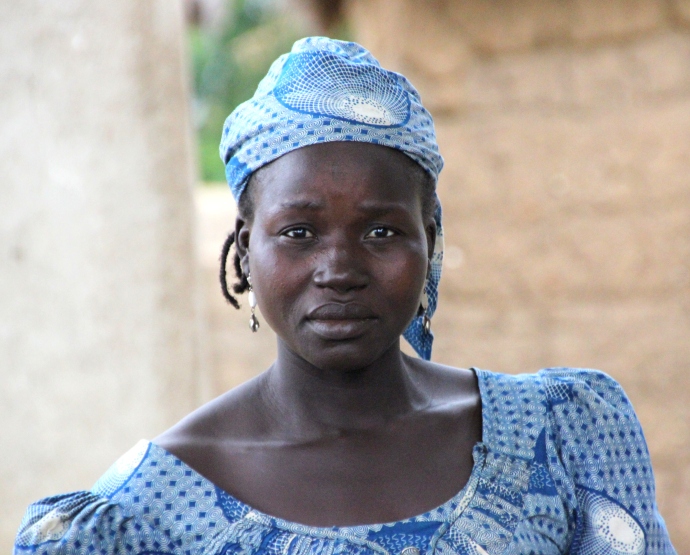
No mother should ever have to see her children go hungry.

